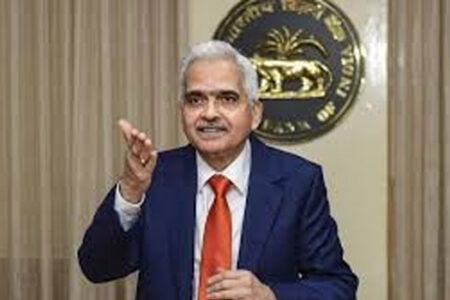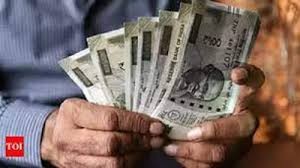“It’s all about managing expectations.”
That’s what Reserve Bank of India (RBI) Governor Shaktikanta Das said while settling down for the customary post-policy interactions with the media on Thursday.
The monetary policy, Das’s last before his current term ends next week, managed the expectations quite well. Those who were expecting a rate cut will be disappointed but, overall, it’s par for the course.
The Monetary Policy Committee of the RBI has left the repo rate unchanged at 6.5 per cent but cut the cash reserve ratio (CRR) or the portion of deposits the commercial banks keep with the central bank by 50 basis points to 4 per cent. One basis point is a hundredth of a percentage point.
This will release Rs1.16 trillion into the banking system in two phases between December 14 and 28.
In his interaction with the media, Das has described the CRR cut as “normalisation” of its level. It was raised to 4.5 per cent in April 2022 when the last policy tightening cycle started.
Why did the RBI go for the CRR cut? It expects tighter liquidity in the next few months on account of advance tax outflow, rise in currency in circulation and significant amount of foreign capital outflow.
India’s foreign exchange reserves rose to $704.9 billion on September 27. In the next two months, by November 22, the pile of foreign exchange reserves dropped to $656.6 billion. The combination of dollar sale by the RBI to prevent a sharp fall in the local currency as well as the erosion in valuation has contributed to this drop.
To attract more capital inflows, the RBI has raised the interest rate ceiling on foreign currency non-resident bank account (FCNR-B) deposits by 150 basis points across maturities till March 31 of 2025.
This is not unique. The RBI has been doing this once in a while to attract foreign capital.
When the rupee faced a free-fall against the dollar in 2013 due to the so-called “taper tantrums” in the US, India mobilised $26 billion through FCNR-B deposits. But that was a different story. The mobilisation was done by offering a special swap window for banks. The banks were permitted to swap fresh FCNR(B) dollar funds, for a minimum tenure of three years, at a fixed rate of 3.5 per cent per annum.
On the expected line, the RBI has pared its GDP growth projection and revised upwards the CPI inflation estimate for FY2025.
The real GDP growth now is projected at 6.6 per cent, sharply down from 7.2 per cent. When it comes to CPI inflation estimate, it’s up from 4.5 per cent to 4.8 per cent.
The shockingly low GDP print to 5.4 per cent in the second quarter of the current financial year is a one-off case, the RBI says. Similarly, the 14-month high 6.21 per cent CPI inflation in October also does not set a trend.
Going by the RBI estimate, the third quarter GDP growth will be 6.8 per cent and fourth quarter, 7.2 per cent. The real GDP growth for the first quarter of FY2026 is projected at 6.9 per cent and that of the second quarter 7.3 per cent.
The RBI expects 5.7 per cent inflation in the third quarter of the current year (against earlier estimate of 4.8 per cent) and 4.5 per cent in the fourth quarter (4.2 per cent). It is projected at 4.6 per cent in the first quarter of next year and 4 per cent, by the second quarter.
The “risks are evenly balanced” for both the GDP as well inflation projections. It may not cross 6.5 per cent.
Most analysts still feel that even the latest GDP estimate for the current year is a bit ambitious.
How does one find the tone of the policy?
Well, it depends on what was one’s expectation. Those who were expecting a rate cut will surely find the tone hawkish, keeping in mind the GDP print for the second quarter. The 10-year bond yield rose 6 basis points, reacting to the status quo policy. The prices and yields of bonds move in opposite directions.
For the rest, it is a cautiously dovish policy.
RBI Governor Das repeatedly emphasised on the commitment to restore the balance between inflation and growth and the central bank’s respect for the flexible inflation targeting mandate. Only durable low inflation can create strong foundations for high growth.
In other words, there is no change in the RBI’s approach to monetary policy. Fighting inflation is the priority, while supporting growth.
When do we see a rate cut? The stance was changed in October, from “withdrawal of accommodation” to “neutral. In December, comes the CRR cut. Will we see a rate cut in February?
The RBI has not committed to it. In Governor Das’s words, prudence, practicality and timing will be the guiding principles for RBI’s future actions. Of the three, timing of action is the key.
Before the February policy, the RBI will have the CPI inflation print for November and December and the Union Budget for FY2026 on its table. If there is no negative surprise on the inflation front, we could see a rate cut in February. For now, let’s keep our fingers crossed.
The writer, a Consulting Editor of Business Standard, is an author and senior advisor to Jana Small Finance Bank Ltd. His latest book: Roller Coaster: An Affair with Banking. To read his previous columns, please log on to www.bankerstrust.in



